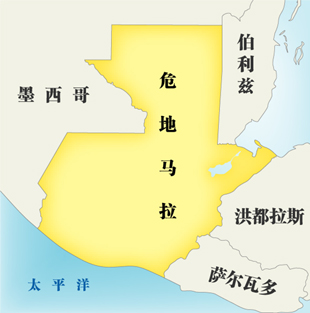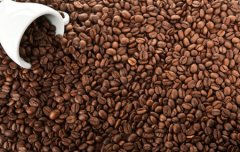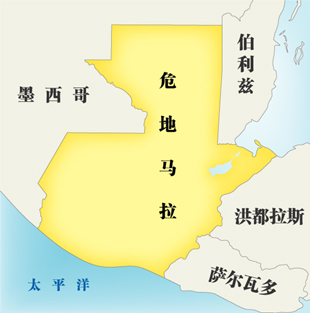Washing treatment of La Tisa Manor in Farahan Plateau, Guatemala, half a pound of bourbon Kaddura
Attland, Guatemala (GuatemalaAtitlan)
The third producing area of Guatemala-traditional Attilan (TraditionalAtitl á n ®)
Of the five volcanic coffee producing areas in Guatemala, Atitlan's soil is the most rich in organic matter.
Guatemala has many volcanic lakes, of which Lake Attila is the largest and most famous; the majestic volcanic mountains extend into the shores of Lake Attila, and 90% of the Atitlan coffee is grown on these majestic volcanic slopes.
The wind that blows over Lake Attilan every day, locally known as Xocomil, has an important impact on the formation of the local microclimate.
Atitlan's traditional handicrafts are very developed, and this highly developed culture is also reflected in the skillful planting and handling skills of small coffee farmers. Although some farmers send coffee to nearby farms for processing, most farmers choose to use the equipment of their cooperatives or directly handle the coffee beans themselves.
Coffee was really introduced into Guatemala in 1750 by Father Jesuit, where the coffee industry was developed by German colonists at the end of the 19th century. Today, most of the coffee industry's production takes place in the south of the country. Guatemala has seven main coffee producing areas: Antigua (Antigua), Cobain (Coban), Lake Attilan (Atitlan), Vevetnango (Huehuetenango), Farahan Plateau (Fraijanes), Oriente (Oliente) and San Marco (SanMareos). Each region has its own climate change, so the coffee beans in each region have their own characteristics, but to sum up, Guatemalan coffee has a mild and mellow overall texture and elegant aroma. With similar hot and pleasant acidity such as fruit acid, Guatemala has become an aristocrat in coffee.
Volcanic soil, high altitude, humid and rainy climate, and active volcanic activity have created the unique geographical conditions of the Farahan Plateau. The Pacaya volcano in the region is the most active of the three still erupting volcanoes in Guatemala, leaving the Farahan Plateau often shrouded in a thin layer of dust and providing plenty of minerals for the soil of the Farahan Plateau. The dry period of coffee beans is the sunny season on the Farahan Plateau. Although it is often cloudy and foggy in the early morning, it will dissipate quickly, ensuring sun conditions in the area.
GuatemalaFincaLasDeliclas
Country: Guatemala
Grade: SHB
Production area: Fraijanes,GuatemalaCity
Altitude: 1675 m
Harvest time: October to February of the following year
Treatment: washing
Variety: bourbon, Kaddura
Processing plant: Ladisha Manor
Flavor: black tea, flower scent, rich caramel feeling

Important Notice :
前街咖啡 FrontStreet Coffee has moved to new addredd:
FrontStreet Coffee Address: 315,Donghua East Road,GuangZhou
Tel:020 38364473
- Prev

Peruvian Fine Coffee Flavor introduction Peruvian Coffee Taste characteristics Peruvian coffee origin Peruvian coffee
Peru (Peru) is also a big coffee producer. Up to 98% of Peruvian coffee is grown in forest areas, and most producers are small farmers. Peru has good economic conditions and a stable political situation, thus ensuring the good quality of coffee. However, there are many local problems. In addition to guerrilla warfare and drug trafficking, cholera occurred along the coast in the mid-1990s.
- Next

How does China Coffee Network choose Coffee beans Guatemala Kovan Guatemala Coffee producing area bourbon Kadu
RainforestCoban GuatemalawbrCoban is very different from other Guatemalan producing areas. Kovan is cloudy and rainy all year round, with a cool climate and soil made of limestone and clay. The vast majority of rainforest Kovan is planted on the rolling mountains of the region and is affected by the tropical climate of the Atlantic Gulf. Kovan climate
Related
- Does Rose Summer choose Blue, Green or Red? Detailed explanation of Rose Summer Coffee plots and Classification in Panamanian Jade Manor
- What is the difference between the origin, producing area, processing plant, cooperative and manor of coffee beans?
- How fine does the espresso powder fit? how to grind the espresso?
- Sca coffee roasting degree color card coffee roasting degree 8 roasting color values what do you mean?
- The practice of lattes: how to make lattes at home
- Introduction to Indonesian Fine Coffee beans-- Java Coffee producing area of Indonesian Arabica Coffee
- How much will the flavor of light and medium roasted rose summer be expressed? What baking level is rose summer suitable for?
- Introduction to the characteristics of washing, sun-drying or wet-planing coffee commonly used in Mantenin, Indonesia
- Price characteristics of Arabica Coffee Bean Starbucks introduction to Manning Coffee Bean Taste producing area Variety Manor
- What is the authentic Yega flavor? What are the flavor characteristics of the really excellent Yejasuffi coffee beans?

